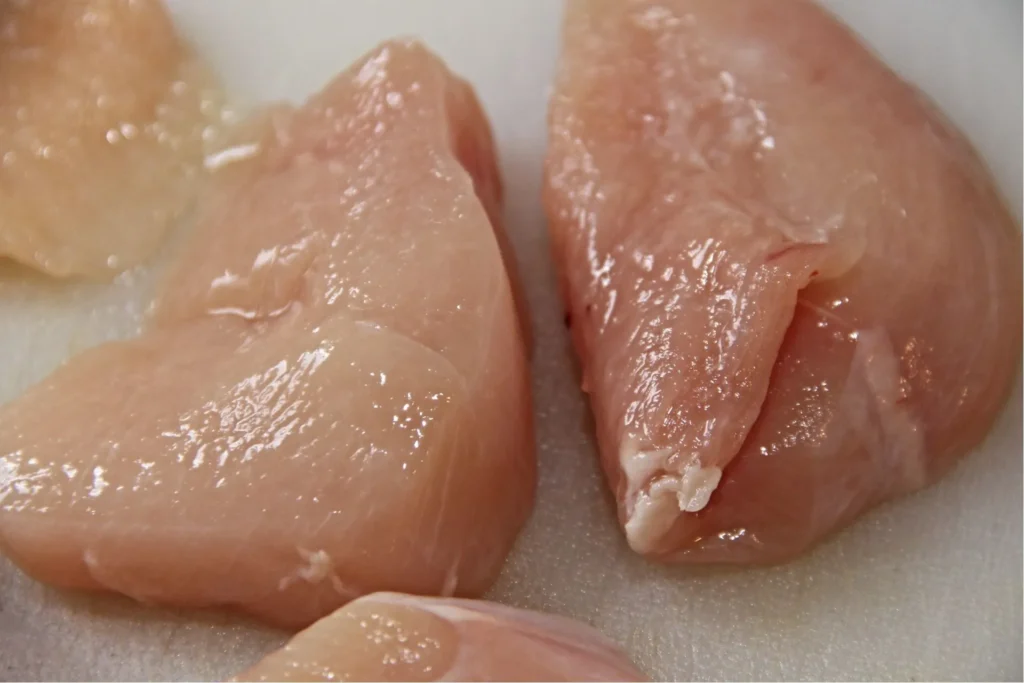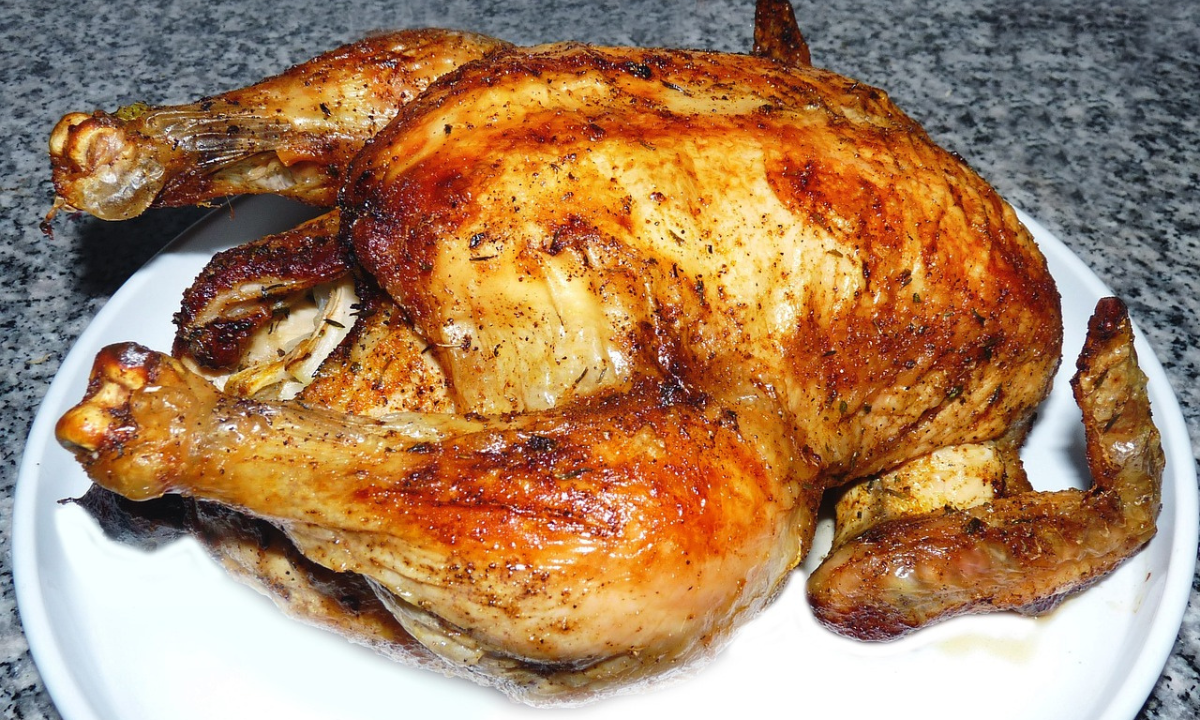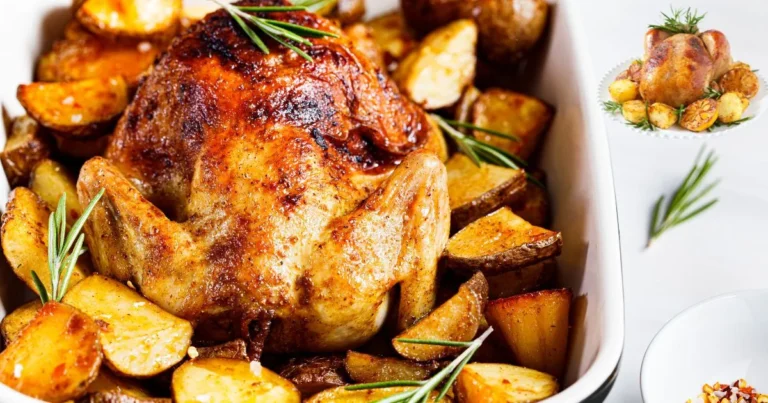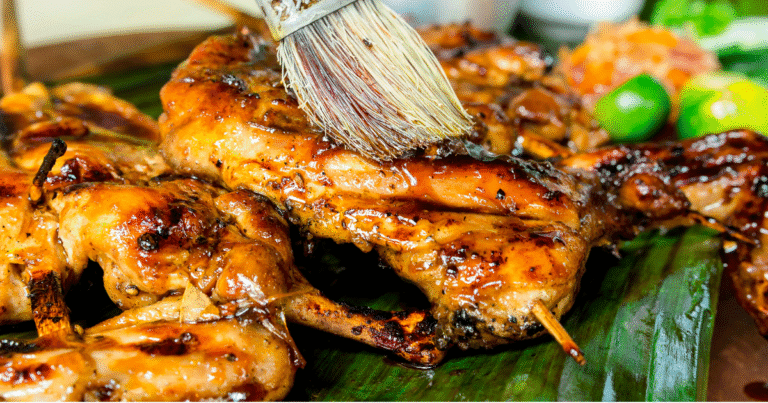How to Master Dry Brine Chicken in 3 Simple Steps
Dry Brine Chicken:
Dry brining is a straightforward yet game-changing technique that can profoundly amplify the flavor and juiciness of chicken. By simply applying salt directly to the surface and allowing time for it to work its magic, this method transforms a basic ingredient into something succulent and deeply flavorful—all without adding a single drop of water. At first glance, dry brining might seem deceptively simple, yet the results reveal a tenderness and depth of flavor difficult to achieve through other methods. Dive into the nuances of this process, and soon, you’ll wield the skills to serve chicken that’s seasoned to perfection and impressively moist every single time.
Table of Contents
What is Dry Brining?
Dry brining is the art of seasoning meat by rubbing it with salt and then letting it rest, undisturbed, as the salt works its way through. Unlike wet brining, which submerges the meat in saltwater, dry brining uses only salt to interact with the meat’s natural juices. This process effectively creates a self-contained marinade. The salt draws out these natural juices, which then mingle with the salt before being reabsorbed into the meat. This not only tenderizes the chicken but elevates its taste, creating a rich, deeply savory flavor.
Why Dry Brining Enhances Chicken Flavor and Texture
As salt permeates the surface of the chicken and interacts with its proteins, it breaks down tough muscle fibers, softening the meat without losing its firmness. This process, beyond just seasoning, locks in moisture, reducing water loss as the meat cooks, ultimately yielding a more succulent, satisfying bite. Unlike traditional wet brining, which can dilute flavor, dry brining highlights and preserves the chicken’s own distinct taste.
Advantages of Dry brining Compared to Traditional Wet Brining :
Dry brining boasts several notable advantages. For one, it’s less messy—requiring no containers filled with brine solution, making it a practical choice when space is tight. Additionally, dry brining delivers more concentrated flavor, and it produces a delectably crisp skin—a much sought-after feature among culinary aficionados. Faster and simpler, this technique requires only a few essential ingredients, making it ideal for both novice cooks and seasoned chefs looking for a reliable method to achieve savory perfection.
Choosing the Right Chicken for Dry Brining
Success in dry brining starts with selecting the right chicken, with factors such as size, cut, and freshness playing pivotal roles.
Whole Chicken vs. Chicken Cuts: Which Works Best?
Both whole chickens and individual pieces—such as breasts, thighs, or drumsticks—are well-suited for dry brining. Whole chickens benefit tremendously, as the salt permeates every crevice, creating consistent flavor throughout. Individual cuts, though faster to brine, achieve great results as well, making them ideal for quicker meal prep.
Fresh vs. Frozen: Impact on Brine Absorption
Fresh chicken is always preferable, as it absorbs salt most effectively. Frozen chicken can work but must be thoroughly thawed first. Thawing often causes water loss, which can dilute the salt’s effectiveness. For peak results, use high-quality, fresh chicken whenever possible.
Essential Ingredients for a Perfect Dry Brine
Choosing the right ingredients can greatly impact the outcome of your brine and, ultimately, the flavor of your chicken.
Salt Types and Ratios for Effective Dry Brining
Kosher salt is the gold standard here due to its coarse grains and clean flavor. Aim for 1/2 to 3/4 teaspoon of kosher salt per pound of chicken. Table salt, being finer, can lead to over-salting if used in similar quantities, so avoid it when possible.
Optional Flavor Boosters: Herbs, Spices, and Aromatics
Enhance your dry brine by adding dried herbs like rosemary, thyme, or sage, or include ground spices such as garlic powder and smoked paprika. Aromatics, like lemon zest and cracked black pepper, lend complexity without overshadowing the chicken’s natural taste.
Creating a Customized Dry Brine for Different Tastes
For those looking to experiment, customize the brine by introducing regional flavors. Try adding oregano, lemon, and olive oil for a Mediterranean twist, or smoked paprika, brown sugar, and cayenne for a bold, robust profile.
Step 1: Preparing the Chicken for Brining
Proper preparation ensures optimal brine absorption and enhances the final flavor.
Cleaning and Patting the Chicken Dry
Rinse the chicken lightly with cold water, then pat it dry with paper towels. Removing excess moisture is crucial as it allows the salt to adhere and penetrate better, amplifying the brine’s effect.
Properly Scoring and Seasoning the Skin
Score the skin lightly to help the salt penetrate more deeply. Scoring should be shallow—just enough to aid absorption without causing moisture loss during cooking.
Tips for Even Salt Distribution
Ensure that salt is evenly sprinkled over all surfaces, including crevices and the cavity in whole chickens. Even distribution is essential for a balanced, consistent flavor throughout the meat.
Step 2: Applying the Dry Brine
With the chicken prepared, it’s time to apply the brine for a deep flavor infusion.
Techniques for Even Application of the Brine
Massage the salt and seasonings into the skin thoroughly, covering every inch. For individual cuts, ensure each piece is coated well, but avoid clumping.
Brining Time: Short vs. Long Brines and What to Expect
Short brining sessions of 30 minutes to an hour can work in a pinch, but for deeper flavor, aim for 12-24 hours. Longer brining times allow the salt to permeate, resulting in maximum flavor thoroughly.
Using a Dry Brine Rub for Extra Flavor
For an added burst of flavor, apply a spice rub after brining. This optional step is especially useful for grilling or roasting, as it imparts a flavorful crust.
Step 3: Resting and Storing the Brined Chicken
Proper resting time is crucial to achieve the best flavor and texture.

Ideal Resting Times for Maximum Flavor Penetration
Resting the brined chicken uncovered in the refrigerator allows the skin to dry out, leading to a perfectly crispy texture when cooked.
Storing in the Fridge: Open-Air or Covered?
Place the chicken in an open container or on a rack for optimal airflow. Covering traps moisture, which can prevent the skin from crisping to perfection.
How to Know When the Chicken is Fully Brined
A properly brined chicken will have taut, slightly translucent skin. If you’re unsure, rinse a small section and taste to check for saltiness.
Cooking Techniques for Dry-Brined Chicken
Select a cooking method that complements the rich flavor of brined chicken.
Roasting, Grilling, and Pan-Frying: Best Methods for Results
Each method brings out unique qualities in brined chicken. Roasting ensures even cooking and a crisp exterior, grilling imparts a smoky depth, and pan-frying creates a golden-brown crust.
Adjusting Cooking Times for Brined Chicken
Since brined chicken retains more moisture, it may cook faster than non-brined meat. Monitor closely and aim for an internal temperature of 165°F (74°C).
Tips for Crisping the Skin to Perfection
For crispy skin, start at a high temperature, then reduce heat for the remaining cooking time. This approach guarantees a crunchy skin with a tender, juicy interior.
Common Mistakes to Avoid in Dry Brining
Avoid these common pitfalls for flawless dry brining.
Over-Salting: How Much is Too Much?
Stick to recommended salt ratios to avoid an overly salty taste. Adjust proportions as needed based on the cut size.
Skipping Resting Time: Why Patience Pays Off
Allowing ample resting time is vital, as it ensures the brine fully penetrates and tenderizes the meat.
Avoiding Uneven Brining and Inconsistent Flavor
Take time to apply the salt uniformly for consistent seasoning throughout the chicken.
Serving and Pairing Ideas for Dry Brined Chicken
Complete your meal with sides and garnishes that complement the chicken’s depth of flavor.
Simple Side Dishes to Complement Brined Chicken
Roasted vegetables, creamy mashed potatoes, or fresh salads all make excellent pairings, balancing the chicken’s richness.
Sauces and Garnishes that Enhance Flavor
Herb butter, chimichurri, or a zesty aioli highlight the savory notes of brined chicken, adding freshness and depth.
Presentation Tips for a Restaurant-Quality Finish
Arrange sliced chicken on a platter with fresh herbs for a refined look. A sprinkle of sea salt or olive oil adds a finishing touch for visual and culinary appeal.
Conclusion and Final Tips for Dry Brining Success
Mastering dry brining empowers you to create chicken dishes with exceptional flavor and texture. Practice and experimentation will yield new, exciting flavors—embrace the journey, and enjoy the satisfying simplicity and elegance of dry-brined chicken.
Frequently Asked Questions (FAQs) :
What is dry brining, and how does it work?
Dry brining involves rubbing salt directly onto the chicken and allowing it to rest. The salt draws out moisture, which then mixes with the salt and is reabsorbed into the meat, enhancing flavor and tenderness.
How does dry brining differ from wet brining?
Unlike wet brining, which requires soaking the meat in a saltwater solution, dry brining uses only salt. This method preserves the chicken’s natural flavors while also improving its texture.
What advantages does dry brining offer compared to wet brining?
Dry brining requires less space and is less messy. It also results in a more concentrated flavor, crispier skin, and is quicker to prepare with fewer ingredients.
How long should I dry brine chicken?
For optimal flavor, it’s recommended to brine chicken for at least 12 to 24 hours. Shorter brining times (30 minutes to 1 hour) can work in a pinch but may not yield the same depth of flavor.
Kosher salt is the preferred choice due to its coarse texture and clean flavor. Avoid using table salt, as it can lead to over-salting.
Can I dry brine frozen chicken?
While you can dry brine frozen chicken, it’s essential to thoroughly thaw it first. Fresh chicken is preferable, as it absorbs salt more effectively.
What should I do if I accidentally over-salt the chicken?
If you’ve over-salted, you can rinse the chicken under cold water to remove some of the excess salt. Alternatively, you can balance the flavor with a side dish that is less salty.
What cooking methods work best for dry-brined chicken?
Roasting, grilling, and pan-frying are excellent methods for cooking dry-brined chicken, each offering unique textures and flavors.







